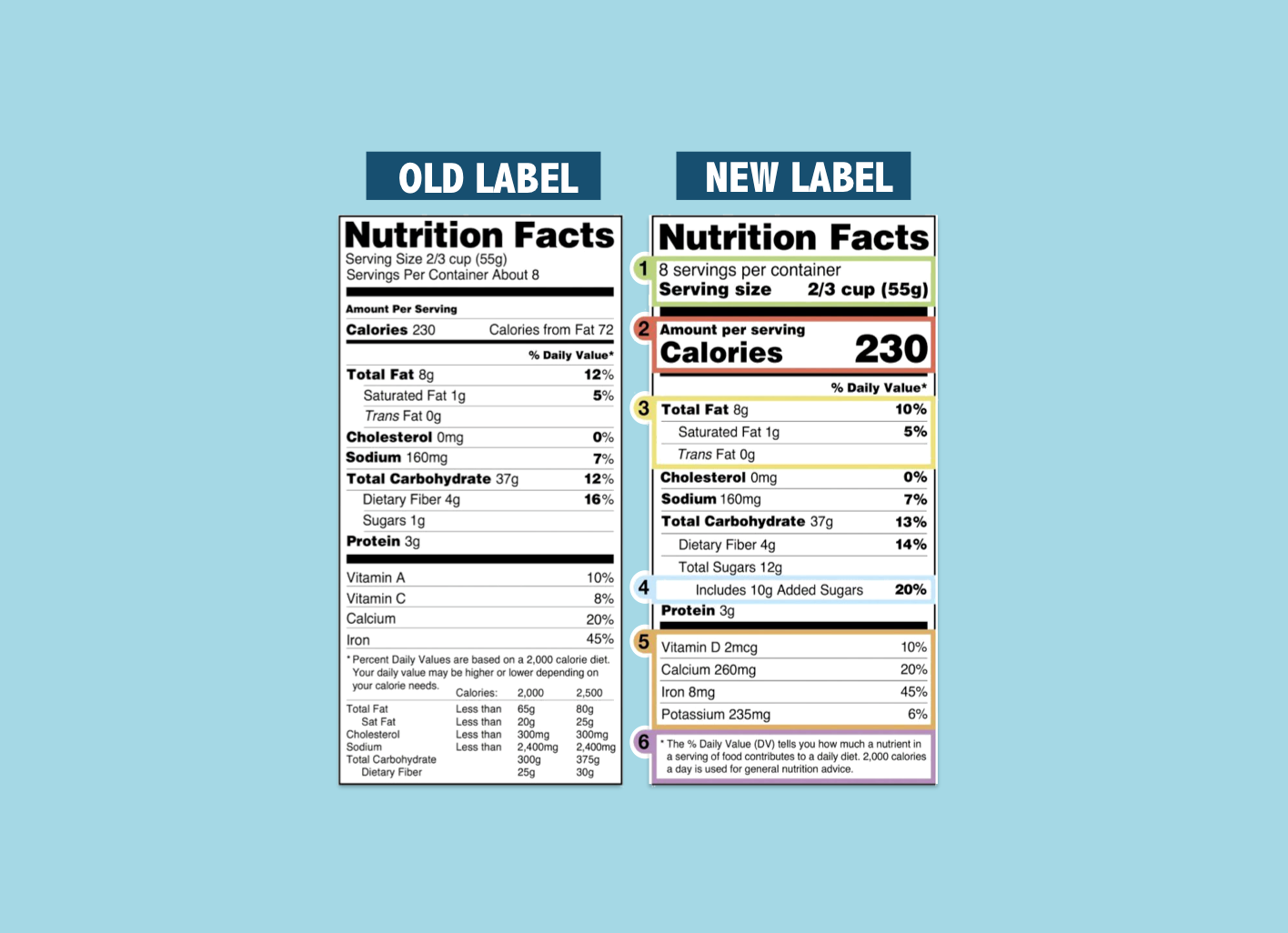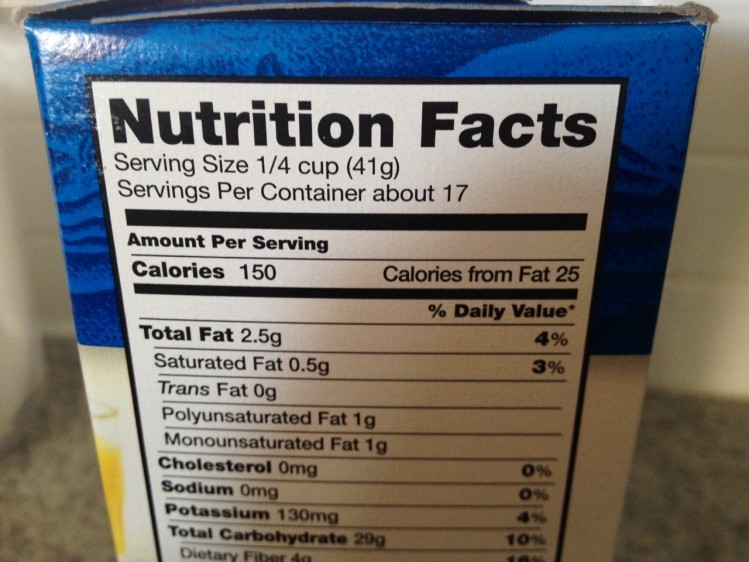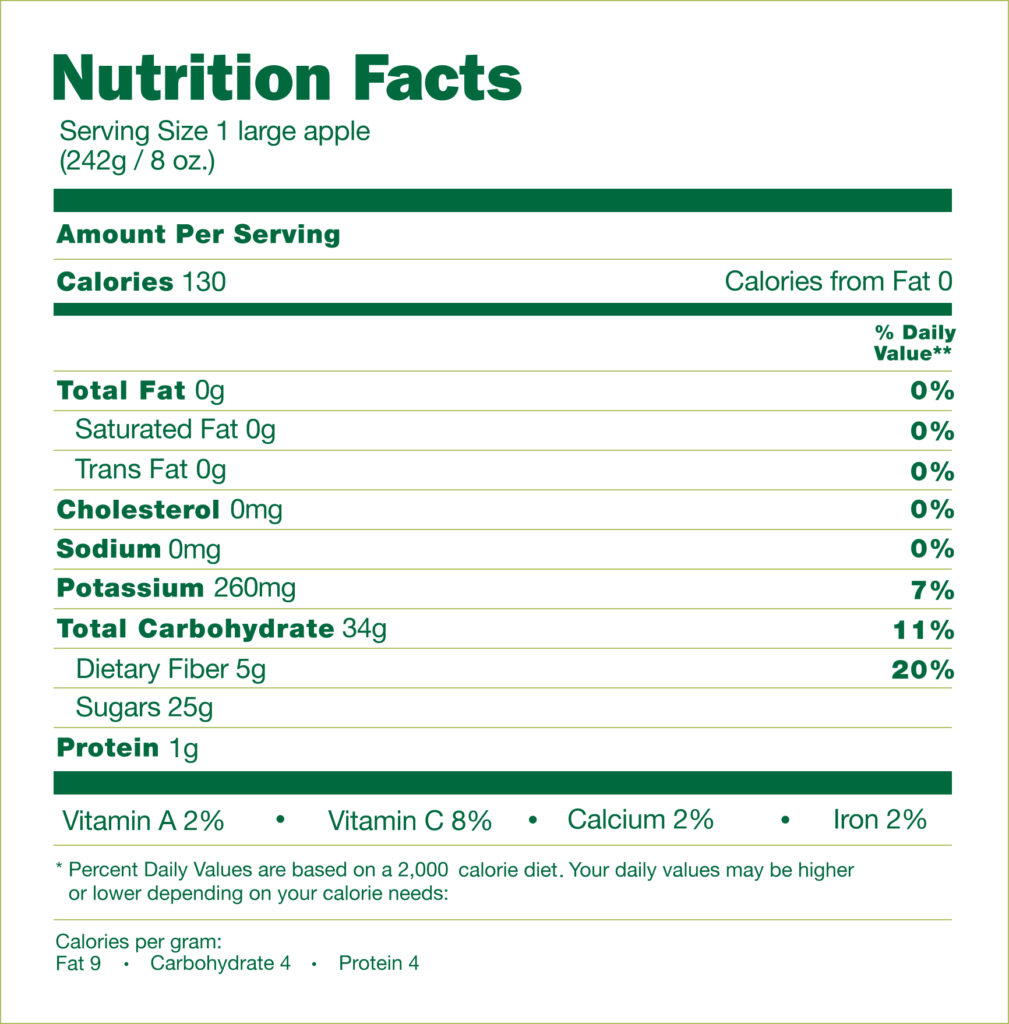38 what is total fat in nutrition label
Daily Value on the New Nutrition and Supplement Facts Labels Which Nutrients Are Required to Be Listed on the Nutrition and Supplement Facts Labels? The Nutrition Facts label must list total fat, saturated fat, trans fat, cholesterol, sodium,... How to read nutrition labels - Mayo Clinic Diet 3. Check the % Daily Value. The % Daily Value (DV) tells you how much a nutrient in a serving of food contributes to a daily diet. 2,000 calories a day is used for general nutrition advice. Low is 5% or less. Aim for low in saturated fat, trans fat, cholesterol, sodium, and added sugars. High is 20% or more. Aim high in vitamins, minerals and ...
How to Understand and Use the Nutrition Facts Label | FDA Saturated fat, sodium, and added sugars are nutrients listed on the label that may be associated with adverse health effects - and Americans generally consume too much of them, according to the...

What is total fat in nutrition label
How to Correctly Read a Nutrition Label - Cleveland Clinic Fats, carbohydrates and proteins are the three main macronutrients in foods and drinks. They give you energy, build muscles and help absorb vitamins. What to keep in mind: Certain types of fats and carbohydrates are healthier than others. Here's what to pay attention to, for each of the above: Fat How to Read Nutrition Facts Labels the Right Way - GoodRx Nutrition Facts labels are required to list the total fat, saturated fat, and trans fats on packaged food products. It's important to choose foods with the right kinds of fats. ... However, foods that contain less than 0.5 g per serving are allowed to list the trans fats as 0 g on a nutrition label, so consumption of these fats is still ... PDF What It Is - Food and Drug Administration Fat is found in foods from both plants and animals. Total Fat on the Nutrition Facts label includes: Saturated fat is found in higher proportions in animal products and is usually solid...
What is total fat in nutrition label. Understanding Food Nutrition Labels | American Heart Association Not all fats are bad , and total sugars can include both natural and added sugars. Limit the amounts of added sugars , saturated fat and sodium you eat, and avoid trans fat. When choosing among different brands or similar products, compare labels and choose foods with less of these nutrients when possible.. 4 - Get enough of the beneficial ... Fat and Calories: The Difference & Recommended Intake - Cleveland Clinic Read nutrition labels on food packages. Nutrition labels show the number of grams of fat per serving. Compare this number to your "budgeted" amount of fat for the day. Food labels also show the daily percentage of fat provided in each serving. In other words, if the daily percentage of fat per serving is 18%, each serving provides 18% of ... Nutrition Label Glossary: Definitions of Nutrition Fact Terms - WebMD This number on a food label indicates how much fat is in a single serving of a food. Limit total fat to less than 25% to 35% percent of the calories you consume each day. All fats have 9 calories ... The Basics of the Nutrition Facts Label - Academy of Nutrition and ... A food item with a 5% DV of fat provides 5% of the total fat that a person who needs 2,000 calories a day should eat. You may need more or less than 2,000 calories per day. This means that you may need more or less than 100% DV that is listed on the package for some nutrients. Low is 5% or less.
Food Labels: Fat & Cholesterol | Home & Garden Information Center * Total fat includes unhealthy saturated and trans fat, as well as healthy polyunsaturated and monounsaturated fat. Limit your total fat intake to 100% DV or less per day. **In June 2015, the American Heart Association recommended that saturated fat intake be no more than 5-6% of total calories. Food labels - NHS There are guidelines to tell you if a food is high in fat, saturated fat, salt, sugar or not. These are: Total fat High: more than 17.5g of fat per 100g Low: 3g of fat or less per 100g Saturated fat High: more than 5g of saturated fat per 100g Low: 1.5g of saturated fat or less per 100g Sugars High: more than 22.5g of total sugars per 100g Understanding Food Labels | The Nutrition Source | Harvard T.H. Chan ... These statements describe the nutrients in a food beyond what is listed on the Nutrition Facts label, intended to showcase a health benefit of the food. An example is "Contains 100% Vitamin C.". Most terms like "low sodium," "high fiber," "reduced fat," and "good source of" are regulated by the FDA, and the nutrient amounts ... Food Labels | CDC If you eat the whole thing, you are eating 8 times the amount of calories, carbs, fat, etc., shown on the label. Total Carbohydrate shows you types of carbs in the food, including sugar and fiber. Choose foods with more fiber, vitamins, and minerals. Choose foods with lower calories, saturated fat, sodium, and added sugars. Avoid trans fat.
PDF What It Is - Food and Drug Administration Fat is found in foods from both plants and animals. Total Fat on the Nutrition Facts label includes: Saturated fat is found in higher proportions in animal products and is usually solid... How to Read Nutrition Facts Labels the Right Way - GoodRx Nutrition Facts labels are required to list the total fat, saturated fat, and trans fats on packaged food products. It's important to choose foods with the right kinds of fats. ... However, foods that contain less than 0.5 g per serving are allowed to list the trans fats as 0 g on a nutrition label, so consumption of these fats is still ... How to Correctly Read a Nutrition Label - Cleveland Clinic Fats, carbohydrates and proteins are the three main macronutrients in foods and drinks. They give you energy, build muscles and help absorb vitamins. What to keep in mind: Certain types of fats and carbohydrates are healthier than others. Here's what to pay attention to, for each of the above: Fat
:max_bytes(150000):strip_icc()/Untitled-design-2--57535bc15f9b5892e8c65c9c.jpg)
























:format(webp)/https://www.thestar.com/content/dam/thestar/life/parent/2022/05/04/your-guide-to-understanding-nutrition-facts-labels/wh_healthykids_may4.jpg)







Post a Comment for "38 what is total fat in nutrition label"